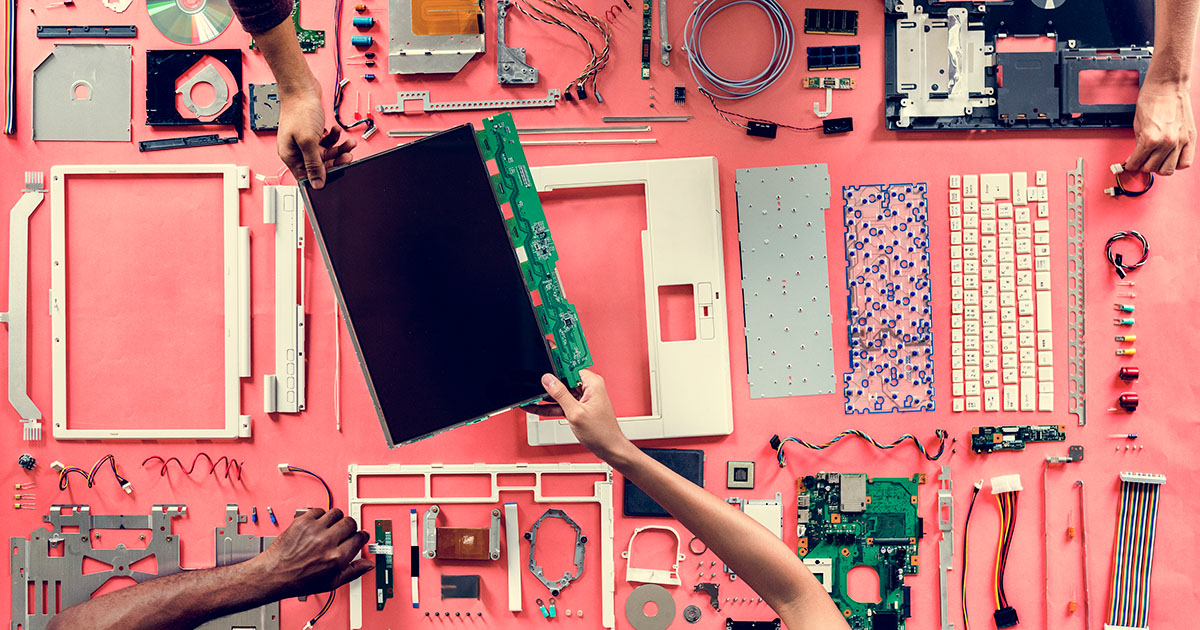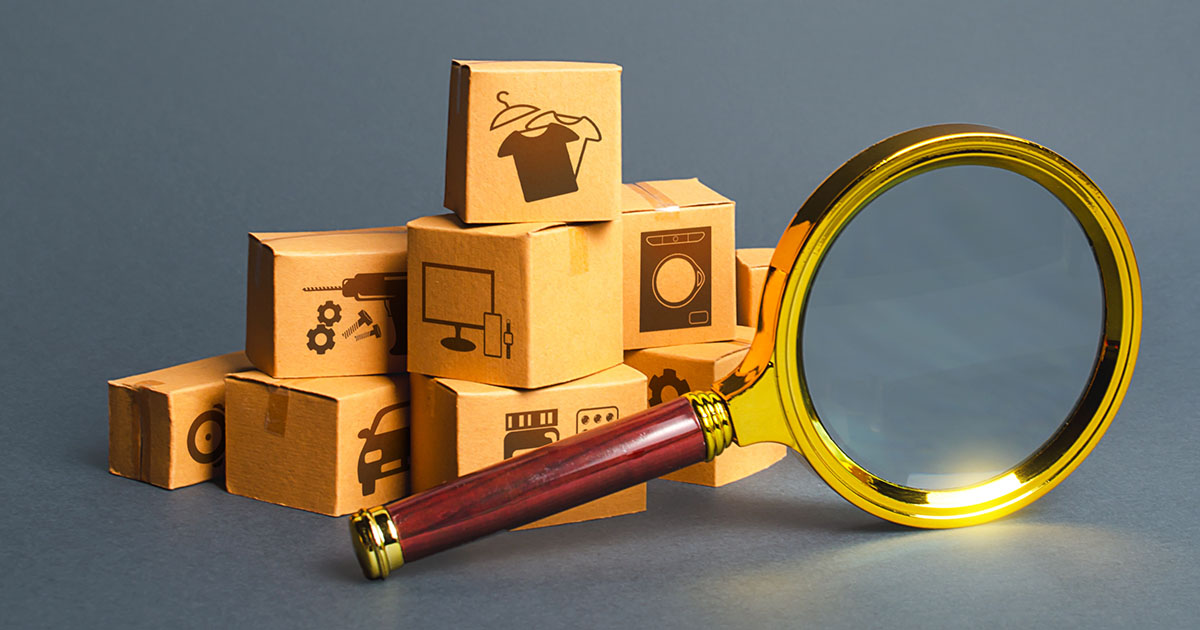A beginner’s guide to buying products made in free nations.
So you’ve decided you want to start looking more carefully at the origin of products you buy and perhaps support or avoid certain countries, but you still struggle to find good options easily. This guide is meant to help you on your way and provide some useful tips.

Table of contents
Step 1: Set your standards
In today’s interconnected world it’s almost impossible to have every product you buy be made 100% in the countries of your choice, so it’s useful to determine exactly what standards you’re going to set for yourself.
Determine your motivations.
Firstly, determine what your motivations are. Do you want to avoid funding certain governments, support local manufacturing, ensure good working conditions or is there another reason?
Knowing exactly what’s important to you will help you make difficult choices.
Face reality.
Unfortunately it’s highly unlikely that you’ll be able to buy all products exactly according to your standards. Even if a product is made in a country of your choice, that rarely means its components and raw materials are as well.
Accepting this reality now will hopefully help reduce any disappointments later on.
Setting your rules
Now that you’ve outlined your motivations and accepted that you’ll have to make compromises, decide what you’re standards will be and which compromises you’re willing to make.
How far will you go to avoid or support certain countries? How much more are you willing to spend in money and time?
While you can always adjust your rules later on, they help making choices easier and avoid disappointment or guilt when you have to make compromises.
Step 2: Educate yourself.
When you want to be more selective about the products you buy, it helps to be more knowledgeable about what options you have and what pitfalls to avoid.

Have a healthy dose of skepticism.
A lot of companies aren’t very honest or transparent about the origin of their products, so always have a healthy dose of skepticism.
The myth of the “made in” – label.
Companies are well aware that some countries have a better reputation than others. Since the “made in”-label is often the only indication of a product’s origin you’ll have, they would like to have the right country on that label. That way, you’re more likely to buy the product and might even pay more for it.
Unfortunately, most countries have very low requirements when it comes to putting their name on the “made in”-label. It generally suffices to assemble or finish the product there. So while it’s often better than nothing, take “made in”-labels with a very big pinch of salt.
Some countries, like the USA, actually do put strict rules in place. Still, companies get creative with labels such as: Designed in California, Assembled in the USA, German Engineered or Italian heritage.
Another trick you will see often is the flag of a country on packaging, don’t fall for it. For a full overview of what “made in”-labels mean in various countries/regions, check out our guide to country of origin label requirements.
Counterfeits and false advertising.
Counterfeit goods are estimated to be a $500 Billion/year industry, so you can be sure that the internet is flooded with them.
As counterfeiters certainly won’t hesitate to lie about the product’s origin, it’s always a good idea to try and shop at reputable stores that have a direct connection to the manufacturer. Even better if you can buy straight from manufacturers themselves.
Please be aware that, in my opinion, sites like Amazon are NOT reputable stores anymore; most products there are sold by unaccountable third-party sellers.

Learn which countries to look for.
When looking for responsibly made products it’s useful to be able to answer the following questions.
Which countries meet my criteria?
Knowing which countries meet your criteria and what their best alternatives are gives you a good starting point and enables you to quickly judge whether a product is an option for you.
For example: At Made By Liberty, we care mainly about the level of personal freedom in a country. That’s why we made our own World Freedom Index where we give each country a score based on their economic, political and civic liberties. It enables us to quickly see which country is the best option.
Where is this type of product generally made?
Certain types of products are often made in specific countries/regions. Knowing which ones these are will help you find products faster.
For example: most consumer electronics, like smartphones or computers, are made in East-Asia. So your chances of finding a good option are a lot higher when looking at Taiwan or South Korea rather than France or Canada.
Does the country/region produce components?
Having a good idea of where components and materials are generally produced will help protect you against getting mislead or at least give you a more detailed view regarding the origin of the product.
For example: you might find earbuds made in Malaysia or smartphones made in Germany. But these countries don’t tend to produce the electronic components necessary for these products. So it’s more accurate to say they were assembled there.
How to get educated.
The best way to learn is through experience and research. The more you try to find responsible products, the better you’ll get at it.
But until then, you can either do research for yourself on sites like YouTube, or you can join a community like Made By Liberty where you can learn from other people that already have experience on the subject.

Step 3: Finding products.
Now that you have established what your rules are and learned what to watch out for when choosing products, it’s time to give you some concrete tips on how and where to find them.
Use online tools
Currently the best way to find good products is to use online tools and communities. There you’ll often find people who have years of experience in finding responsibly made products. Here’s a list of some that might help:
- Made By Liberty Directory: Our own directory of products made in the free world. There are other directories out there, but we kept finding inaccurate or limited information on them, so we set out to build our own. You can simply type in the product your looking for and we’ll give you a list of options rated on how free and transparent their production is.
We try to give you as much information about any product we list and direct you to a reputable seller. It’s 100% free to use, requires no sign-up and has no ads. - Avoidchineseproducts subreddit: While this subreddit’s main focus is on products not made in China (PRC), it has a large number of dedicated members with a huge amount of knowledge regarding product origin, whom you can ask for advice or recommendations.
Browse physical stores
When you’re browsing physical stores, the “made in”-label is generally the only thing you can go by to determine the origin of a product; but sometimes that’s more than you have online. So it still pays off to check them out now and then, as you can sometimes be pleasantly surprised.
Buy second hand
Buying second hand is a great fallback option when you can’t find a product that meets your standards as you’re not supporting the regime/manufacturer with your purchase and it’s better for the environment to boot.
It’s not always a solution, but definitely one worth considering.
Bookmark brands
While you’re roaming on the internet, you might come across products you think are great and meet all your standards, but don’t need straight away. In that case it might be a good idea to take a note or bookmark the page so you don’t forget.
Or better yet, tell us about them! We’ll add them to the Made By Liberty directory and you can always come back to find them.
Closing thoughts
I hope this guide was helpful in getting you a clearer idea on how to go about finding products made in free nations. If you have any more questions, don’t hesitate to reach out, I’ll gladly help you along.
One last piece of advice: don’t get discouraged. There might be times where you can’t seem to find any good options no matter how hard you look. I’ve been there, just keep doing the best you can and we’ll move the world in the right direction one step at the time.
And if you want to be part of the solution, perhaps consider following Made By Liberty on our social media or subscribing to our email list. We’re an initiative that wants to bring freedom and transparency to the free market with a lot of exiting projects in the pipeline. We would love for you to join us!


Leave a Reply